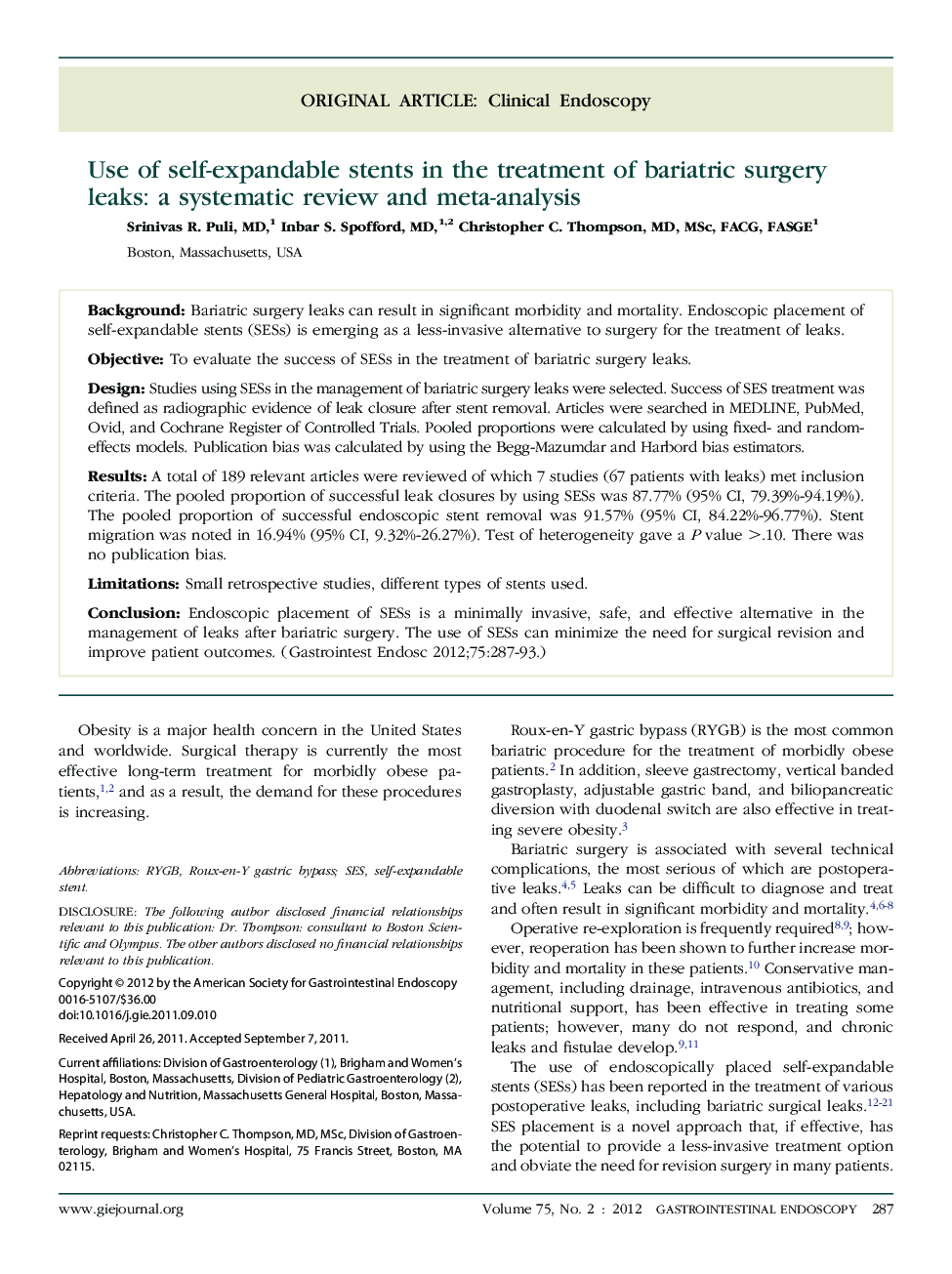| Article ID | Journal | Published Year | Pages | File Type |
|---|---|---|---|---|
| 3304606 | Gastrointestinal Endoscopy | 2012 | 7 Pages |
BackgroundBariatric surgery leaks can result in significant morbidity and mortality. Endoscopic placement of self-expandable stents (SESs) is emerging as a less-invasive alternative to surgery for the treatment of leaks.ObjectiveTo evaluate the success of SESs in the treatment of bariatric surgery leaks.DesignStudies using SESs in the management of bariatric surgery leaks were selected. Success of SES treatment was defined as radiographic evidence of leak closure after stent removal. Articles were searched in MEDLINE, PubMed, Ovid, and Cochrane Register of Controlled Trials. Pooled proportions were calculated by using fixed- and random-effects models. Publication bias was calculated by using the Begg-Mazumdar and Harbord bias estimators.ResultsA total of 189 relevant articles were reviewed of which 7 studies (67 patients with leaks) met inclusion criteria. The pooled proportion of successful leak closures by using SESs was 87.77% (95% CI, 79.39%-94.19%). The pooled proportion of successful endoscopic stent removal was 91.57% (95% CI, 84.22%-96.77%). Stent migration was noted in 16.94% (95% CI, 9.32%-26.27%). Test of heterogeneity gave a P value >.10. There was no publication bias.LimitationsSmall retrospective studies, different types of stents used.ConclusionEndoscopic placement of SESs is a minimally invasive, safe, and effective alternative in the management of leaks after bariatric surgery. The use of SESs can minimize the need for surgical revision and improve patient outcomes.
